June 25, 1999: Streaming-Video on the Web get's 'shuttered'
From the Isee3d press release:
'Isee3d will soon be offering consumers
the full '3D Viewing
Enabler Kit'. This retail box will include
the hardware and
software (including 3D shutter glasses)
required for plugging
directly into the free version of RealNetworks
RealSystem G2(tm)
player and viewing content in high quality
3D. With over 60
million registered users of the
RealPlayer, Isee3D will leverage
RealPlayer to direct consumers directly
to its new 3D portal web
site.'
June 25, 1999: VR Standard Corporation is giving away a free high-tech Laser (digital) Mouse with the purchase of VR-Joy until the supply lasts.
By the way: VR Standard Corporation has a world wide distributorship contract with Woobo Electronics, making it the sole distributor for VR-Joy. 'Futuristic Enterprises', which was mentioned on the news earlier, will be another sales line, much like just another distributor

June 25, 1999: New brand of shutterglasses: Another I's
The new wireless shutterglasses by Another
World are available for PC and TV. There is some new stereo-software
too, including a VRML-viewer!
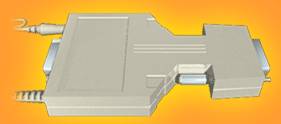
I can't tell much about the controller
technology yet, apart from the fact that there's a 'line-blanker' in it.
BTW, the thing looks like..., looks like..., ahh never mind.
June 25, 1999: New: German i-glasses website
Distribution of i-glasses, i-glasses x2, Protec, spare parts.

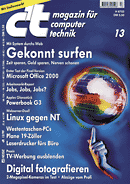
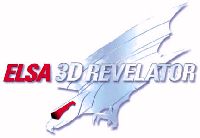

June 19, 1999: Don't miss my Revelator review in german language! Issue 13/99 of c't-magazine is out now! Available all over Europe.
Later the Revelator will also be covered on stereo3d.com in a different form and in english language. For now you may check my previous news-postings regarding the Revelator and the updated Best-Buy-page.
June 19, 1999: Recent updates of pages:
Shutterglasses
comparison chart
Shutterglasses
X-Ray lab
Best-Buy
Recommended products page
Application
software chart

June 12, 1999: NuVision 60GX
I just received the NuVision 60GX professional wireless glasses.
In a nutshell:
- they connect to
everything: DIN-3, DIN-5, DIN-7, DB9, 3.5 mm, VGA-pass-through (ask for
the proper adaptor)
- the version for
'non-stereo-ready (NSR)' PC's and workstations has a sync-doubler and also
syncs to any interlace or page-flipping mode
- the NSR
version works with everything: Wicked3D drivers, ELSA Revelator drivers,
H3D-native titles, professional StereoGraphics titles, LCD-BIOS, VR-BIOS,
SSDI, WinSPEX, 3D-Win, SimulEyes titles, whatever... (Warning:
most drivers are only sold with respective hardware)
- there is no (!)
line-blanker as in the VR-Joy or EyeFX
- giant pi-cell
LCD-panels
- comfortable, fits
over prescribed glasses
- manual control
for all functions
- sync-doubler gets
the power directly from the VGA-port if available, a seperate power supply
is also part of the set
- good documentation
An in-depth review
is in the works.
May 30, 1999: VREX stereo survey - prices to win!
Help VREX
do develop the stereo3D hard- and software of the future. Join the survey.

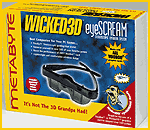
May 30, 1999: H3D/eyeSCREAM-Activator and ELSA boards
If you own some H3D/Wicked3D
glasses you may wonder if they'll work on the new hot ELSA boards and ELSA
D3D-stereo-drivers.
Well they'll work
using the H3D-Activator
(Page-Flipping mode) , but there are several problems:
- up to now the Revelator
drivers are not available online; they also doesn't seem to be part of
the ELSA board-driver packages
- there must be
no change in graphics mode after using the Activator or the glasses will
drop out of stereo-mode; many games use different modes for menues and
game, so there's a problem
- if there's only
one tiny slipup in the page-flipping the glasses may show a reversed picture;
this really can happen and there's no way back apart from ending the game
and go back to the Activator
- the original ELSA-Revelator
glasses work under way higher resolutions and refresh rates. I tried to
put the H3D/Wicked3D into page-flipping mode under 1024*768@hi-color@100
Hz - no use.
Here's my recommendation: If you're interested in the ELSA boards or already own one, get the original wireless Revelator IR glasses. The Revelator glasses will listen to the H3D-IR-emitter and vice versa. So you have the best of both worlds controller-and-driver-wise and you and a friend can always use the two glasses simultaniously.
This doesn't imply a general recommendation for the ELSA system - yet.
BTW the controller/emitter
of the Revelator won't work on current Wicked3D boards and drivers, since
it lacks the required sync-doubler circuitry!

May 23, 1999:
Mother
nature says: Stereo is more important than Color
In the current issue
(6/99) of german popular science magazine P.M.
you'll find an article about the visual systems of animals. Surprisingly
many mammals (Säugetiere) have excellent stereoscopic-vision, but
no or very limited sense of color. Obviously for many lifeforms stereo
is a larger survival factor than rich colors. It should be noted however,
that limited, i.e. selective color perception, is an advantage in itself
in certain cases.
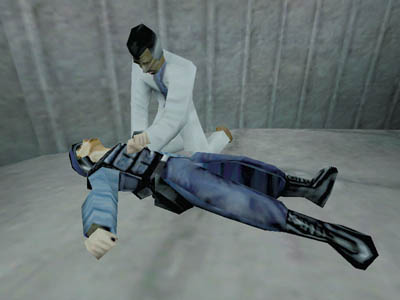
Half-Life security guard - overjoyed by the latest Stereo3D-News!



May 23, 1999: Half-Life in native stereo3D for HMD's and line-blanker shutters
I was told by Carsten of the VFX1 , VFX3D & Cybermaxx Homepage that the native stereo-mode of the Quake engine is still present and accessible in Half-Life, one of the hottest games around.
If you are using Wicked3D or ELSA universal stereo drivers and glasses, please just stop reading here! This is of no concern for you! Or do you want to go back to software rendering, i.e. non-3D-acceleration?
The native stereo mode in alternate-line
format should be suitable for i-glasses, VFX, CyberMaxx, VR-Joy, EyeFX.
It
may also work with Windows interlace drivers, i.e. VRex VR-BIOS or SSDI,
i-Art 3D Win, APEC VRViewer, 3D-BIOS and such, but this requires a compatible
VGA-card and some work.
3D-acceleration isn't supported in native
stereo-mode!!!
Instructions:
Start the Half-Life-exe-file with
option '-console', i.e. :
- right-click the Half-Life icon on your
desktop and choose properties
- change the command line parameter 'hl.exe'
or 'hldemo.exe' into 'hl.exe -console' or 'hldemo.exe -console' respectively.
- start Half-LIfe
- go to configuration/graphics
- choose software mode and a resolution
(don't choose OpenGL or Direct3D or the system will crash in stereo-mode!)
- start the game
- call up the console with ^-key
- type in LCD_X 1 (for more stereo-options
and hints check the Quake-page)
You should see a line-sequential stereo image now.
I encountered a bug however. On my machine, with Matrox Mystique, the lower half of the screen remains black. Obviously the screen-height is calculated wrong in LCD-mode. It may depend on graphics card and VESA- or desktop-driver. Just try it! Fixes for this problem are welcome.
Thanks to Carsten Meyer, webmaster of the
VFX1
, VFX3D & Cybermaxx Homepage



May 23, 1999: Looking for VFX and Cybermaxx infos and downloads?
Check the VFX1 , VFX3D & Cybermaxx Homepage by Carsten Meyer & Klaus Tietz. You'll find extensive software lists covering stereo and headtracking, downloads, news, technical background. The page is in german, but the lists and downloads should be valuable for non-german speakers also. An english version of the pages is announced.
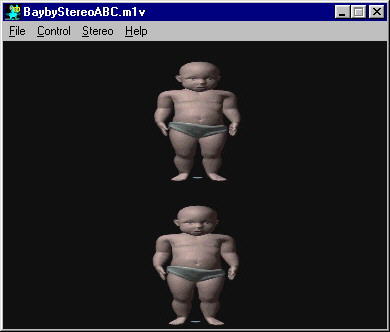
May 16, 1999: Free stereoscopic MPEG 1 & 2 encoder & player available.
Supports many formats
including page-flipping, above-below and anaglyph. There are video-samples
too!
The software is
in it's early stages, so don't expect too much. Please try it and give
some feedback to the developer Michal Husak.
Go to Michal Husak's Stereo-MPEG page!
May 8, 1999: Wicked 3D announces Dual-Voodoo3 setup
Wicked3D
freed itself from the costly hardware distribution and concentrates on
development now. In the latest press release (May, 7th) they announced
a partnership with Alienware to
release a Dual-Voodoo3 PCI setup. Other chipsets may follow.
Current status of
the test-system/drivers: Quake2 @ 1600x1200 @ 63 frames per second
and increasing.
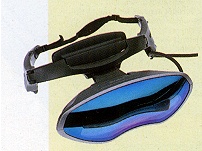
May 8, 1999: For the latest info and some 'nude'-photos of the Sony Glasstron, including the stereo-versions, check the HMD section of mi-mi.com
May 8, 1999: Canon GT270 consumer HMD released in Japan
Facts:
- ultra light weight - 150g
- cool design, although not as cool as
Sony Glasstron
- 270k pixels per eye
- earphones
- distribution plans for markets outside
of Japan yet undisclosed
Source: VRNews magazine
Speculation:
- video only
- no VGA input
- no stereo3D
- no headtracking
May 5, 1999: Wicked3D gives up hardware business.
From the press
release:
'Today, Wicked3D , a division of Metabyte,
Inc., announced a change in company direction to shift its focus back to
its core competency in software development. The Wicked3D hardware product
lines will be discontinued but support for current Wicked3D customers will
continue.'
May 5, 1999: The 3rd Ever 3D Movie/Video Competition
The Third Ever Stereoscopic 3D Movie/Video International Competition will be sponsored by the 3D Movie/Video division of the Stereo Club of Southern California. Closing date for entries will be August 2, 1999. Judging will be held on August 7, 1999.
Films must be produced by the entrant. The organizers are prepared to project 16mm Bolex/Elgeet, Super 8, Elmo/Powell, Pulfrich, anaglyphs, S-VHS (NTSC) or VHS (NTSC) alternate-field video (standard play speed). (Please write or call about other formats.)
Prizes are being donated by: VRex Inc.; 3D TV Corporation; NuVision Technologies; StereoGraphics Corp.; Reel 3-D Enterprises; Ray "3D" Zone; MegageM Digital Media; and Lawrence Kaufman.
Entries and additional prize donations are welcome.
 >>>>>> >>>>>> |
 |
May 5, 1999: ClassyGlasses turned into Stereovision.net
ClassyGlasses changed it's name, it's URL
and it's design - all to the better. Congratulations.
Both the new and the old URL are currently
active:
www.classyglasses.com
and www.stereovision.net.
April 24, 1999: Win3D press release:
'The Win3D stereoscopic
library is now released. With this library, from
the Win3D company, developers can add
stereoscopic support to their
Windows applications. For the
first time, developers can provide True
3D support on about all video cards,
and all VR gear. The library
provides support for 3Dfx,
nVidia, ATI, S3, 3DLabs, and about all other
video cards.
Just about all VR gear is supported, including H3D,
3D
Spex, VR Surfer,
Anaglyph, Over/Under, etc.
Finally, developers can add eye-popping
True 3D to their web-plugins,
viewers, games, industrial apps, or
just about any other kind of app,
and know that it will apply to more
than just a particular type of
hardware.
The Win3D stereoscopic library is available at www.win3d.com.'
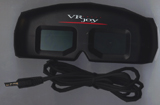
April 24, 1999: VR-Joy update
VR-Joy now comes with a new software bundle:
Hexen2 full retail version
3D-Win 2.3 - a very good windows
interlace driver by i-Art
for many gfx-chipsets (real interlace has some advantages over the artificial
interlace/line-blanking as provided by the VR-Joy controller)
SIC - Stereo Image Converter 30-day-evaluation
version by Woobo
and - if the VR-Joy is ordered through D.I.S.T. - an image collection.
The VR-Joy should also work flawlessly on the new ELSA-gfx-boards as a derivate for the Revelator glasses, but this has yet to be veryfied.
April 24, 1999: ELSA update (source: c't 9/99)
Elsa will bundle their professional
gfx-board Gloria XXL with a free pair of Revelator glasses from
May 15 on. The Revelator connects directly to the Gloria board via DIN-3
jack.
A Direct3D-universal stereo driver isn't
available for the board, which is strictly focused on the professional
WinNT-user.
Stereoscopic support is provided for 3D Studio Max (via MAXtreme driver) and for AutoCAD releases R4 and 2000 (via ELSA View 3D driver). Both drivers are part of the software bundle. The Gloria XXL has a list price of 4498,- DM = 2300 Euro = 2700 US$.
The new professional ELSA Synergy II
board with TNT2 chip and OpenGL-ICD support also comes with the MAXtreme
and ELSA View 3D drivers, but seems to lack the DIN-3 jack. If the Revelator
will work on this board via the VGA-pass-through cable remains to be seen.
April 24, 1999: The ELSA Revelator made it into the price-lists of two (if not THE two) major german mail-order retailers. That's something other shutterglasses usually don't achieve. The H3D/eyeSCREAM glasses never showed up in the ads of a major retailer over here!
The prices for the Revelator (wireless I assume):
Computer
Profis: 139 DM = 71 Euro = 85 US$
Alternate:
99 DM = 50 Euro = 58 US$
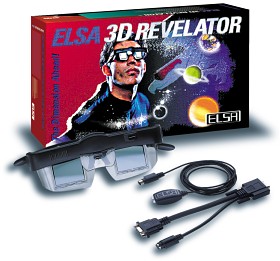
April 17, 1999: ELSA Revelator-update
As you can see in the new pic above the
Revelator has larger LCD-panels - compared to the old H3D/Wicked3D
version. The IR-transmitter features a
VESA compliant mini-DIN-3 connector. Graphics
boards without DIN-3 require the VGA-pass-through
adaptor which is part of the package.
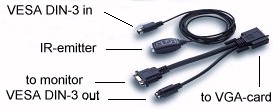
Now here comes the funny part:
1) Those ELSA-cards which have a DIN-3
connector are not supported by the
ELSA-universial-D3D-stereo drivers.
2) Those ELSA-cards with ELSA-universal-D3D-stereo-driver
support don't
have the DIN-3 connector, i.e. they need
the adaptor.
3) The adaptor is more expensive for ELSA
to make than a DIN-3 on the board.
Conclusion: It's a crazy crazy world. Well,
to be honest, ELSA claims that they need the room on the back of the
cards for video in/out and stuff. Also
some older cards are supported, so
they have to throw the adaptor into every
glasses-package anyway.
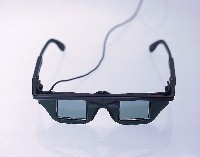 And
here's the wired version.
And
here's the wired version.
For more details on the revelator please
check the older News-messages on this page.

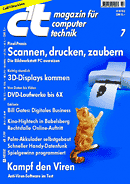

March 28, 1999:
Issue
7/99 of renowned german computer magazine c't
is out now!
16 pages are dedicated to Stereoscopic 3D.
Contents:
Stereo-basics: Räumlich durchs
Auge - Wie kommt die greifbare Welt in den Kopf von Prof. Dr. Michael Bach
(Redaktion: Ernst Ahlers)
Stereo-solutions: Das plastische
Panoptikum - Darstellungssysteme für dreidimensionale Bilder von Dr.
Alexandre Saad und Annette Hevler (Redaktion: Peter Schmitz)
Shutterglasses: Raumöffner
- Räumliches Sehen mit LC-Brillen von Christoph Bungert (Redaktion:
Ernst Ahlers)
Korrektur zur Tabelle auf Seite 178 in
c't 7:
Fußnote 6 muß lauten: mit
Wicked3D Grafikkarte
Fußnote 8 muß lauten: mit
Voodoo2 Grafikkarte
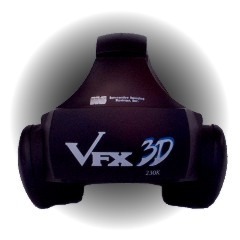
March 26, 1999: IIS-Interactive Imaging Systems has updated it's website. There's now some more information about the upcoming VFX-3D helmet. The LCD-panels will have 360k pixels each, opposed to the 230k pixels announced earlier. The resolution is 789x480 (effective 263x480 !?) per eye. The price is $1795. Release date is 1st quarter '99 - uhh just a few days left!

March 26, 1999: It's official now, the new ELSA-Revelator shutterglasses are based on the VESA VBE 3.0 specification. They support hardware-page-flipping only and can be connected to any VGA or DIN-3 connector.
The VGA-dongle of the ELSA glasses is completely passive and doesn't touch the video-signal in any way. The glasses are triggered by a VESA 3-compliant signal on the data-signal-pin of the VGA-connector.
Due to the use of page-flipping various other VGA-pass-through-devices will work with the ELSA boards and stereo-drivers. Since these other products just look for the vertical retrace of the video signal the synchronisation isn't as precise as with ELSA's own glasses. This shouldn't be that much of a problem though. Anyway the ELSA glasses will provide more comfort since you won't have to control activation and stereo-orientation manually. The ELSA products are also very competitively priced.
Introductory offer:
ELSA offers the wired version of the Revelator for an incredibly low indroductory mail order price - for example: just DM 69,- in Germany.
ELSA-compatibles:
The following VGA-pass-through
glasses should be compatible with the ELSA-boards and stereo-drivers:
ELSA (of course),
VR-Joy, i-Art VirtualEyes, Tetratel EyeFX, CyberStuff Cyber3DVisor (!?),
3DTV stereo driver model-3000, APEC VR97, ASUS-glasses, homebrew VGA-PT
or SD.
 ELSA
& HMDs:
ELSA
& HMDs:
If the refresh rate
on the ELSA boards can be brought down to the 60 to 70 Hz range during
stereo-mode they will also provide universal stereo-support for HMDs like
VFX, i-glasses, Sony Glasstron-3D and many more!!!!!!!!!
If not, I will try
to convince ELSA to include a low-refresh mode! Every HMD-user and every
user of the shutterglasses mentioned above will kill to get their hands
on an ELSA graphics board!!!
ELSA-incompatibles:
The ELSA stereo
gfx-boards definetely won't work for SimulEyes, H3D, eyeSCREAM, CyberMaxx,
CrystalEyes-EPC2, 3D-Max and all the serial, parallel and DIN-3 port glasses.
I'm not shure about the VRex VRSurfer yet. Modification of serial, parallel
and DIN-3 glasses for the ELSA boards should be quite easy though. It also
may be possible to trigger the H3D/eyeSCREAM glasses on the ELSA boards
using the H3D-Activator.
ELSA <-> Wicked3D-compatibility
In theory the H3D/Wicked3D
glasses would work with the ELSA boards if H3D-color-line-code is provided.
BTW, there is no way in hell to make the ELSA-glasses work with the current
Wicked3D boards and drivers, since they use above-below format for sync-doubler-controllers.
It's possible to
interchange the actual wireless glasses however, since they supposedly
use the same IR-code, i.e. the ELSA-glasses should listen to the H3D-emitter
and vice versa. Buying both systems would give you two glasses along with
two different controllers to choose from.
The ELSA glasses
are also a good basis for a homebrew
controller solution.
Screenshot:
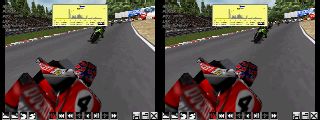
Elsa provided me
with a stereo-screenshot from Superbikes with activated stereo-control-panel.
You see two things here:
the ELSA driver
renders two complete full-res (!?!) images and there is a graphical representation
of the depth-information (Z-axis). I suppose that the diagram shows the
amount of 3D-objects on a certain depth-plane (Z-value). The stereo-driver
adapts to the depth layers in the image (Dyna-Z).
stereo3d.com will
receive test-samples of the ELSA-products ASAP. Stay tuned for the review.
Updated comparison chart:
 |
 |
|
| ELSA 3D Revelator | Wicked3D eyeSCREAM | |
| Glasses: | H3D new versions:
- wireless version with larger LCD-panels (3x2.5 cm) - new wired version |
H3D old version:
- wireless with small LCD-panels (2x2.5 cm) I speculate that Wicked3D may switch to the new glasses (not controller) design as well - if possible |
| IR-Code of the wireless glasses | H3D | H3D |
| Controller: | - small passive VGA-dongle
with very low impact on signal quality, small IR-transmitter
- up to 4 wired glasses or 4 IR-transmitters on 1 PC - VGA-dongle and DIN-3 included - incompatible to the Wicked3D-product range! |
- large VGA-dongle and transmitter
- incompatible to the ELSA-product range! |
| Controller modes | VESA3-compliant hardware page-flipping | autosync for hardware page-flipping
sync-doubling line-blanking |
| Trigger | VESA compliant electronic control signal | color-line-code |
| Supported gfx-boards/ chipsets | ELSA w Banshee
ELSA w TNT (ELSA w TNT2 - announced) (ELSA w Savage4Pro - announced) |
all Voodoo2
Wicked3D w Banshee (all Banshee soon) Wicked3D w TNT (maybe all TNT someday) more chipsets planned |
| Stereo- Supported 3D-API's | Direct3D
(miniOpenGL via 3rd party wrapper only) |
Direct3D
3Dfx-Glide miniOpenGL |
| Stereo- Enhancement | via "Dyna-Z (tm) for automatic optimization of used Z range - creates optimal 3D depth impression" (that's what the marketing guys say) | via stereo.cfg-files |
| Additional Driver features: | no details yet apart from:
stereo-control hotkeys, including depth screenshot-hotkey very high resolutions |
stereo-control hotkeys
incremental resolution and refresh control dual Voodoo2 (SLI) support for all board combinations dual TNT support for Wicked3D boards laser-sight stereo targeting system the highest custom resolutions possible resolution override exceptional speed |
| Software Bundle | image viewer | - |
| Price in Germany (!) | wireless: DM 150 or less
wired: DM 100 or less |
wireless: DM 300 or less |
| Availability in Europe (!) | The european customers will greatly benefit from the ELSA products. It means high availability and low prices of stereo-boards and -glasses for the first time. | From my own experience Metabyte products are hard to get and very expensive over here in Europe. Let's hope Metabyte will react to the competition. |

March 26, 1999: 3DTV corp. now offers flicker-free 100/120 Hz digital TV-sets for shutterglasses in 29, 34 & 38 inch sizes. They work for all TV-systems, i.e. NTSC, PAL, etc. The price is high, but will drop as soon as someone orders large numbers. The perfect solution for Nu-View 3D-camcorder-add-on users and for prerecorded 3D-VHS-tapes.
Also new from 3DTV:
Nasa Solar System
in 3D is out now. Mission to mars & 3 others should appear
this summer. By the same time the first 3D-DVD's (in TriDVD-format)
should become available.
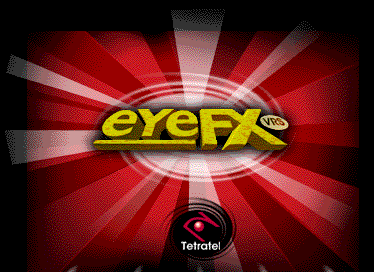
March 26, 1999:
Tetratel,
maker of the EyeFX shutterglasses,
comes out with two new wireless models:
1) A Television-shutterglasses
system with some anti-flicker circuitry
2) An enhanced PC-shutterglasses
system - the successor to the current EyeFX
The glasses are supposed to feature very large LCD-panels, like the giant panels of the wonderful CrystalEyes CE2.
I expected Tetratel
to come out with a revolutionary anaglyph-shutterglasses system which would
eliminate flicker, even on standard TV-sets. No word on this feature yet.
Anyway stereo3d.com
will receive test samples ASAP. Stay tuned for the review.
March 26, 1999: IC3Dstereo3D satellite television channel on the air!
Here's what one of the first viewers has to say:
'Well, the C-band
satellite 3D station is now broadcasting... sort of. The station
is now running
pure analog (not even audio scrambling), and I think they
won't bother
to scramble until (if ?) the number of viewers or cable companies
forces them to.
Really, it's only doing more testing for 'calibration'. They are
playing
one film, a '97
comedy/horror film, The Creeps, shot in 3D, repeatedly with
their infomercial.
If you wait 'til the infomercial is over (it has been updated
a bit) you see
the movie. The 3D is quite credible (normal glasses flicker,
expected at 30/60
Hz), but the movie isn't great, unless you like that sort of thing.
When real features
are planned, they will be scheduled at www.3d.com.
They
have added some
very nice effects that will be before each 'feature', quite
reminiscent of
some of the SciFi channel's intros, but in 3D-- very nice.
They also put
in a filler for Terminator II 3D, a VR ride going in at Universal
studio (3-70mm
screens at high frame rate in 3D... that ought to be worth
seeing... for
12 minutes), but that was NOT 3D, only the 'pseudo 3D' from pixel
shifting on the
fields, which worked very well with this sort of action... the reason
for their choice.
Now if they have reasonable programming.... I called them
again, I now
know their wireless glasses are made in Canada (now who could
that be?), and
they have a bunch of contracts with Realeyes. They appear to
be properly bankrolled.
Pity they couldn't have gone MPEG-2 with a framerate
of say 90 Hz,
but beggars can't be choosers. I bit (I really do support even
off-the-wall
efforts) and popped for $399 US for a box with two pair of wireless
glasses and the
pseudo 3D enhancement for normal video, and true 3D for
the real thing.
They had a $179 box with real 3D (no pseudo) and wireless
glasses, and
a $249 box with both pseudo and real with wired glasses (not
good glasses...
they hurt) as well. That's why I can so easily give the review.'
Some notes from stereo3d.com:
C-3D/Chequemate
the company behind the 3D-television channel is known for it's Fake3D-TV-shutterglasses
systems. They already bought a large bunch of 2D-movies for their 3D-channel.
They plan to convert them to 3D, i.e. turn water into wine.
Currently they air
in analogue field-sequential stereo3D-format. They can't easily switch
to digital broadcast, since MPEG2 isn't compatible with field-sequential
3D. In order to use MPEG2 for stereo they would have to use above-below
format or something similar, like the TriDVD-products.
This would cause many problems, since the format must be converted to work
on standard TV-sets. For the same reason - compatibility with standard
TV-sets - they are not able to raise the refresh rate over the 60 Hz barrier
which causes heavy flicker.

ASUS
March 19, 1999: Supplement to last message:
APEC is alive and kicking, the web-site is up again and yes - there seems to be a connection between APEC and ASUS.
BTW APEC now also distributes software by i-Art with it's glasses.
 |
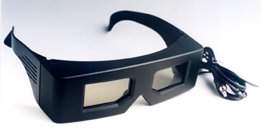 |
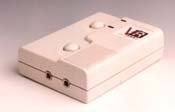 |
|
|
|
|
March 16, 1999: ASUS 99 = APEC 97 ???
ClassyGlasses
found a piece of information at Rivastation
about upcoming ASUS shutterglasses
and TNT2-board with D3D stereo driver. The glasses/drivers are also
supposed to work for the predecessor of the board. All there is about the
ASUS glasses right now is the small image above. Doesn't it look suspiciously
like the old APEC VR97 ??? The APEC
glasses use a plain, passive autosync controller for interlace and page-flipping
modes. Both the famous ASUS board company and APEC are located in Taiwan.
If ASUS uses hardware-page-flipping on their TNT2 board the APEC VR97 VGA
controller would be compatible along with all other "plain" VGA-pass-through
controllers, like VirtualEyes, VR-Joy, homebrew VGA-pt and others. It would
NOT work for VRSurfer, SimulEyes, H3D and all the serial/parallel glasses.
BTW the APEC website seems to be down.
Does APEC still exist? Was it bought out by ASUS? Did it go bancrupt and
ASUS bought the stock of glasses?
All of this is pure, wild speculation
of course!



March 15, 1999:
Stereo3D
in the press. Issue 7/99 of renowned
german computer magazine c't,
due March 29, will feature multi-page articles on stereoscopy and shutterglasses
(see the announcement in issue 6/99 depicted above). Lot's of exclusive,
as yet unreleased informations, in german language. There will be a discussion
of stereo-vision basics and medical issues provided by the Uniklinik Freiburg
as well as a large shutterglasses-part written by myself. Experienced c't
hardware editor Ernst Ahlers puts it all together. - A must have!
Ever wondered how the toy-glasses you
are used to compare to $1000+ pro-glasses? Here you go!
German readers know what this magazine
stands for. No professional, no dealer, no freak, no manufacturer over
here dares to be without it! If you don't advertise here you don't exist!
Visit their website, which also contains
english pages!

March 15, 1999: More ELSA
- ELSA Revelator and Wicked3D eyeSCREAM
are build by the same manufacturer, the glasses itself look very similar
- The wired version will be reminiscent
in design of the wireless version - product shots will be available very
soon on this site
- That's what the manufacturer says: 'The
ESLA glasses are manufactured by i-O Display Systems ("IOD"). IOD
is a
joint venture between Ilixco, Inc. and
TCI (the cable TV company).'
- Certain design features are exclusive
to ELSA however
- There is strong indication that ELSA
and Wicked3D are not compatible to each other !!!
- The ELSA glasses-controller is triggered
electronically, while the Wicked3D is triggered by colorcode
- ELSA uses small, passive controllers
- It's conceivable that the ELSA controllers
doesn't have a sync-doubler or line-blanker as the old Wicked3D/H3D anymore.
Possibly they rely solely on hardware page-flipping. This would explain
why ELSA is claiming full resolution for each eye under any condition.
The consequence would be that VGA-pass-through products such as VR-Joy,
EyeFX, VirtualEyes, APEC VR97 or the plain VGA-homebrew controller are
ELSA-compatible.
- The ELSA connectors are VESA mini-DIN-3
compliant, so you get a VGA-pass-through and a DIN-3 system in one package
at an incredibly low price
- There will be a special promotion offer
on the wired glasses in certain countries with even much lower prices I
don't dare to tell yet. We're entering joystick/mouse price regions here!
It was about time!
- It's unclear which ELSA boards will
be equipped with a DIN-3 - Even ELSA relies mainly on the VGA-dongle

March 14, 1999: Webboard cleaned up! Now loads a lot faster and posting to it should be easier again.

March 14, 1999: HMD-comparison chart updated! It's still one big mess, but there are much more images now. Just see it as an illustrated link-list until I find the time to sort the items and add more technical data.

March 14, 1999: The new Star Wars movie will be the first full length feature film to be presented via digital projection in a few selected theatres. The technology used is the Digital Micromirror Device, marketed as DLP-Digital Light Processing, by Texas Instruments. Digital projection has the potential to be much cheaper and soon even better than traditional film projection.
The reason I'm talking about this is obvious. DLP would work very well with shutterglasses or polarization glasses. It would be virtually ghost-free and flicker-free. I heard rumours some time ago that Lucas even is thinking about shooting Episode 2 and 3 with digital cameras. In traditional film Stereo3D causes a tremendous increase in cost on all levels: production, distribution, presentation. In a digital environment there wouldl be much less extra cost, especially on the side of the theatre owners, who are very cost-sensitive.
I admit there are extra costs and problems in production. Especially "mixed" movies, like Star Wars, where real shots, models and CGI are intertwined will pose problems in post production. Pure CGI films like Toy Story, will cause no intellectual or technological problems, but a doubled render-time.
A problem which could easily be addressed by digital projection is - Frame Rate! The traditional cinema is still stuck at 24 frames a second (with 48 Hz refresh) which is terribly, terribly low. If the camera pans it gets jerky. Experiments show that the human visual system can process at least 70 frames a second. There are already high-frame-rate theatres in theme-parks. With traditional film it's just too expensive to adopt this for the mass-market. Same story with IMAX. Even a 35 minute roll of IMAX-film is incredibly big, heavy and expensive. Furthermore it has to be replaced from time to time due to scratches and cracks. Digital technology would help here. We could have IMAX-3D quality at even higher frame-rates everywhere. Just lean back, relax and wait for another 5 years or so.

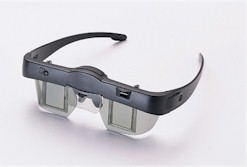

March 13, 1999: ELSA update
The press-release about the new ELSA-glasses is out now. You may check the original paper in german, wait for the english version or visit ClassyGlasses for their comments.
To clear things up, here's an ELSA vs. Metabyte comparison chart, based on the informations currently available:
See updated chart above!
Thanks to ELSA for the additional infos.
March 13, 1999: Corrections to the last news item about ELSA:
1) There is no connection between Metabyte and Elsa.
2) STB already has a presence in Europe. There's an office in Paris.

March 8, 1999:
Elsa News 1: According to GameStar 4/99 ELSA plans to release a shutterglasses system in wireless and wired versions. The wireless glasses appear to be the H3D design. They are supposed to work for all Direct3D titles. The short article doesn't mention any supported chipsets. The main advantage will be the price, at least for european customers. DM 150,- wireless, DM 100,- wired. That's half the price as current Wicked3D/H3D-systems on the european market.
I think it's possible that Metabyte/Wicked3D is behind this and just found Elsa as a distribution partner, but I don't know. Until now the presence of the Metabyte products on the european market was very poor - they have no infrastructure here.
Elsa News 2:
There are rumours in the german press (for example Chip 4/99) that ELSA
will be one of the few, if not the only, board company apart from STB to
get access to the Voodoo3-technology. The reason is that STB is
totally unknown in Europe and don't have any infrastructure over here.
They are in need of an european partner and ELSA is the hottest candidate.
March 6: There's now an official Brasilian VRJoy site by G-World Comercial Ltda.(VRJoy Brasil Distributor). G-World is led by the former president of VR Standard Corp.
February 24, 1999: Infos on the next Wicked3D product (Riva TNT) is available at Sharky.
February 24, 1999: The next generation of homebrew shutterglasses controllers is here, thanks to Andreas Schulz.
Keywords: interlace, page-flipping, sync-doubling, VGA-pass-through, serial, parallel, DIN-3, reverse. (In other words it supports almost anything.) New compact layout. The only thing missing is line-blanking, but this feature is planned.
Andreas' page with all the layouts, part-list, etc.: http://members.xoom.com/a_r_schulz/
February 20, 1999: TGS - Template Graphics Software offers Stereo3D enabled development tools and applications. Here are some keywords: C++, Java, OpenInventor, OpenGL, Crystaleyes, VREX, 3D Decimator, 3Space Assistant 3.0 and more. There are free demos as well.
February 16, 1999: Colored, Hi-Contrast, (Goggle-Free-Stereo3D !?) Video-Projection on Transparent Screen, even under Daylight Conditions.
The "Institut für Licht- und Bautechnik, Köln" (institute for light- and building-technology, Cologne, Germany) developed a ..., well you just read it in the headline. The initial idea was to do a transparent projection screen for the walls of buildings. The usual white screens used for open-air projections hurt the appearance of the facade.
Since the institute had 7 years of experience in holographic surfaces they used a thin holographic foil between two glass plates. The holographic layer has the right reflection/absorbtion properties to allow projection on it in daylight. The screen appears to be fully transparent otherwise. Planned applications are giant transparent screens on buildings, in stadiums, etc. Another idea is to present videos on shop windows, so the custumer can see the video and the window display simultaneoulsy.
There is also a prototype
for goggle-free stereoscopy. It's not revealed how this works, but I guess
the holographic screen reflects the light comming from a certain angle
or in a certain polarized state into defined directions. Maybe an effect
like the one known from lens-grid arrays, used for 3D-postcards, but obviously
much better.
The stereo effect
is described as "verblüffend klar" - stunningly clear - by the journalist
who saw it.
This news is based on an article in 'Frankfurter Allgemeine Zeitung' (one of, if not 'the' most renowned german newspaper) of February 9, Technology supplement page T 10.
It's unclear from
the article if the transparent-screen-project and the goggle-free-stereo-project
are the same. Maybe they're talking about two totally different technologies
and there's no combination of the two, i.e. no giant goggle-free stereo
projection on glass.
If it's one project
however, the old, ridiculous Sci-Fi cliche of 3D projections hovering in
mid-air would become true and I - and the rest of the pack - would drop
dead of course. Strew our graves with shreddered shutterglasses!
Let's just hope that
at least some of this information proofs ot be accurate. I'll have to further
investigate this - obviously.

February 6, 1999:
Stereoscopic
3D is the front-page issue on www.playboy.com
today. The article will move soon, so
take a look now! Thanks to the author Caity McPherson of www.juicymango.com
February 6, 1999: VR Standard the world-wide distributor of the Woobo VR-Joy changed into Futuristic Enterprises Inc.
Contact:
Anthony Bucceri
Futuristic Enterprises
Inc.
Tel : 1-201-941-9090
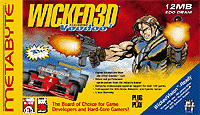
February 6, 1999:
In
December I criticized the Wicked3D
ratings for Turok-D3D and King's Quest 8. These programs showed no noticable
stereo effect. Now with the beta-driver 3.15 - released January 19th -
Turok-D3D became better and KQ8 has it's own stereo.cfg file now (terrific
effect).
It looks like the
ratings on the Wicked3D website were based on unreleased driver-software
and cfg-files. I find this policy irritating. If they award a silver or
gold rating they should say how this was achieved.
I'm also still unhappy
with the stereo effects in most Direct3D programs. How can this be fixed?
Will there be stereo.cfg files for Direct3D programs? Why is there no warning
screen as in Glide and GL programs when activating stereo mode?
What happens when
Wicked3D comes out with a RivaTNT board which doesn't support Glide? Most
of the good stereo-stuff is currently achieved via 'Glide'.
BTW, here's
the list of stereo.cfg-files from the 3.15 drivers.

February 6, 1999: Looking for a Sony Glasstron professional distributor? Here you go:
Boris Doncov /Mimi
International
1360 Clifton Ave/106
CLIFTON, NJ 07012
USA
http://www.mi-mi.com
Tel/Voice mail 1-(973)
779-8323
Fax/Tel answering
1-(973)-778-0888
E-mail: Boris-Doncov@worldnet.att.net
Distributor for:
- LDI-100/E
- LDI-50/E
- LDI-D100 (stereo, field sequential, March '99)
- LDI-D50 (stereo, field sequential, March '99)

February 5, 1999: SimulEyes reminder by Dave Milici:
Since StereoGraphics
doesn't bother updating their web site very often
(as if you hadn't
noticed), VESA-capable SimulEyes drivers are still
posted at these
FTP locations:
ftp.stereographics.com/drivers/svrdos32.zip
ftp.stereographics.com/utilities/simbios.zip
ftp.stereographics.com/utilities/simquake.zip
SVRDOS32.DRV makes
Whiplash and Shattered Steel run faster with VESA
modes;
SIMBIOS.EXE takes
advantage of SciTech UNIVBE refresh rates, and draws
white code in
generic LCDBIOS apps;
The DOS Quake
version of SIMBIOS is bound to a smaller/friendlier DOS
extender;
Anyone who's interested
could search for other goodies in the same
locations.
--DaveM

February 5, 1999: ClassyGlasses has server problems at the moment and isn't available all the time.
Even if the server should be down you can still access the webboard at:
http://forums.f3d.net/cgi-bin/Ultimate.cgi?action=topics&forum=H3D+Talk&number=16
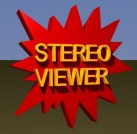

February 5, 1999:
The
H3D-Activator-
and H3D-Stereo-Viewer-pages moved to GlassyGlasses!
Check http://www.classyglasses.com/ghazaly
ClassyGlasses currently
has server problems though.
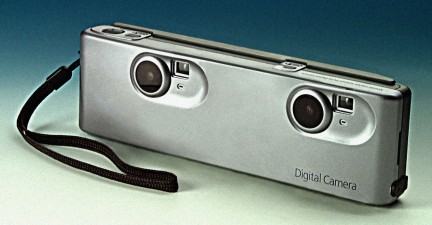
February 5, 1999: Concerning the Digital-3D-Camera by 3-D Images Ltd., UK mentioned here recently I received this update:
Thank you for
that mention of our litlle 3D digital camera. We have since made
others based
on other higher res cameras.
Press Release
Jan 30th 1999.
We have now launched
our SAME DAY service for converting clients digital files
(from two to
40 frames) into 7 inch lenticular prints, at £65 each. Can be
either 3D renderings
or motion images.
We can output
up to 4 feet by 6 feet, 3 day service, for £1800.
Contact David
Burder at 3-D Images Ltd,
London.
Tel 0181 364
002, Fax 0181 364 1828, Email Burder3D@
aol.com,
or 3-DImages.com
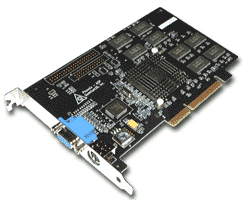
January 31, 1999: Finally a 3Dfx Banshee board with DIN-3 stereo socket: the Quantum3D Raven. I'd like to remind you that DIN-3 isn't a consumer solution yet. There's almost no consumer software support, i.e. there are almost no games. Even if Metabyte expands it's Wicked3D eyeSCREAM drivers to support all Banshee boards the DIN-3 socket will be of no use here. The DIN-3 socket requires page-flipping format instead of split-screen. There is hope though - look at the message below.
Thanks to Hal Hanley for the news.
January 31, 1999: Regarding the stereo3D developments at Scitech I received these usenet messages forwarded by Owen Pearn:
> news://news.scitechsoft.com:scitech.mgl
> From: KendallB@scitechsoft.com
(Kendall Bennett)
> Subject: Re: whither
stereo support?
> ...
> We are just about
complete on all the stereo integration stuff with both
> the MGL and into
SciTech Display Doctor. The next version of SDD will
> support the new
stereo functions, as will the next MGL 4.1 version. We
> are also fully
stereo enabling the 2.0 release of GLDirect using the same
> technology.
>
> So we expect to
be able to provide pervasive stereo support for MGL apps
> on any graphics
card and any LC glasses later this quarter (when SDD
> ships). We are
also planning on building an SDK for Direct3D programmers
> to use for enabling
LC stereo using the IHV Direct3D drivers (same code
> will be used for
GLDirect) but using our code to control the stereo page
> flipping.
> ...
> | Kendall Bennett
> | Director of
Engineering
> From: Dave Milici
<davem77@well.com>
> Subject: Re: whither
stereo support?
> ...
> If you want to
get a look *right now* at MGL support for stereo with
> OpenGL for existing
stereo-ready accelerator boards, check out the
> modified v4.05
source code that I posted on my site. These simple v4.05
> changes are what
later MGL releases will be based on.
>
> http://www.wenet.net/~ironic/mglster.zip
> http://www.wenet.net/~ironic/skyfly.zip
>
> The MGL library
adds a MGL_STEREO flag which merely selects PFD_STEREO
> into a WIN32 pixel
format descriptor when initializing an OpenGL
> rendering context.
Non-OpenGL GDI applications can already use the
> MGL_createStereoDisplayDC()
API in v4.05.
>
> The SKYFLY example
just plain looks really cool in stereo mode.
>
> You'll need one
of the stereo-ready boards using Rendition Verite 2200
> (Hercules Thriller3d,
Genoa Raptor3d) or Verite 1000 (Canopus Total3d),
> or 3DLabs Permedia2
(Diamond FireGL1000Pro, Hercules Dynamite3D/GL).
> Plus you'll need
their OpenGL drivers (ICDs) for OpenGL apps, or have
> SDD v6.53 installed
for GDI apps.
>
> Of course, you'll
have universal stereo board support when SciTech
> releases the new
software emulated stereo drivers and libraries. Thanks
> to Kendall and
Tom for their continued support!
>
> --Dave Milici
> ironic@wenet.net
January 26, 1999: Discussion board problem solved. Please start posting again!!!
January 26, 1999: Looks like there's a problem with my Discussion board. I'm investigating this. In the meantime please use email .
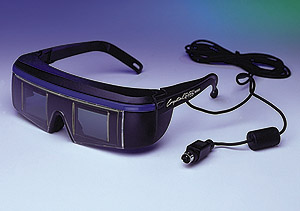
January 26, 1999: Stereographics just released their new entry level DIN-3 shutterglasses called 'CrystalEyes-Wired (TM)'. They suspiciously look like the late SimulEyes, just with a DIN-3 plug on it. Such a product was announced for ages. I came to believe that it would never see the light. Just recently I removed the announcement from the shutterglasses overview chart.
This product comes FAR TOO LATE. There was a short DIN-3 boom on the VGA-board market, with companies like Hercules and Diamond putting the connector on their design. Since no consumer glasses showed up at that time the manufacturers removed the DIN-3 port again.
Of course there are still professional gfx-boards featuring a DIN-3 socket, but the big mass market opportunity was missed.
The latest example: Although 3Dfx put the DIN-3 on the Banshee reference design, no board-manufacturer seems to have adopted it.
According to StereoGraphics the 'CrystalEyes-Wired' are targeted on the professional WindowsNT market. At $299 the new glasses should be a hell of a lot better than the SimulEyes, but I doubt it.
Looking at the recent
press-releases by StereoGraphics I found out that they now legaly protected
the term 'Stereo3D' as a trademark. I don't know when this happened,
but I hope it won't pose a threat to this website.
What's next? A television
manufacturer protecting the term 'ColorTV' as a trademark, preventing all
others from using it?

January 26, 1999:
This
isn't exactly news, since the Digital-3D-Camera by 3-D
Images Ltd., UK is available since 1997. I haven't mentioned it yet
although it was depicted in 3D-Magazin Oct. 97 already. Somehow it escaped
me - sorry. It's based on two Kodak DC20 cameras. Unfortunately the DC20
is pretty much outdated now, but this baby is shure the easiest way to
get 3D-stills into the PC fast.
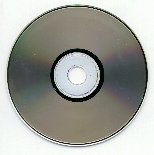
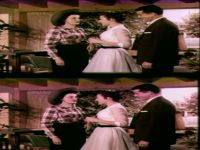
January 24, 1999:
TriDVD
page released. Digital video in Stereo3D at it's best!

January 24, 1999: Please check Classy Glasses for a special offer from 3-DVideo Inc. concerning H3D-TV-controllers, 3D-video tapes and extra glasses.

January 24, 1999:
The
professional
versions of the Sony Glasstron
are here. The LDI-100 (NTSC) and the LDI-100E (PAL) both feature a resolution
of 832 x 642 x 3 per panel! Viewing angle is 28 degrees.
And now it comes: a Stereo3D version
is in the works. The prototype is already running with 3D-DV-tapes
- Yieeeehaaaaaw!
The 3D versions will only be available
from Sony's Broadcast and Professional Group, not as consumer products.
Get the original flyer in PDF-format here.
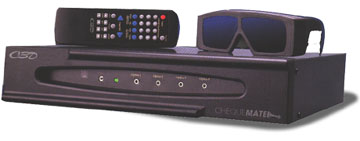
January 24, 1999: 3D-Television channel announced
This news comes far too late, but I just
saw this November 98 press-release
from C-3D. C-3D is
the company behind the Chequemate C-3D
digital 'fake-3D' TV-shutterglasses system.
They have plans for a digital satelite
3DTV- and data-channel in IP format for spring 99. They already rent a
satelite channel.
Looks like they developed a set-top box
for digital TV, Internet-surfing and 3D.
From the text in the press-release I can't
determine what their plans are in terms of 3D-technology.
I can say that much: In order to stay compatible
to current TV-sets they have to stick to the technical
specifications of television systems,
which means 60 Hz (NTSC) and 50 Hz (PAL) refresh.
No digital set-top box can do something
about this. You can't feed a TV set with higher refreshs,
not even over the RGB-input (Scart). Well
you can squeeze your lemmon a bit and drive a modern PAL TV at 60 Hz and
a
newer NTSC-TV maybe at 70 Hz. This is
within tolerance.
We are chained to this specification.
No magic tricks possible here.
I think a 50/60 Hz shutterglasses system
isn't suitable for the mass-market.
There are 2 ways out of this dilemma
- use a PC or at least a PC-monitor connected
to the set-top-box for higher refresh.
or
- use anaglyph-shutterglasses
The still unreleased anaglyph-shutter technology
is supposed to eliminate flicker even at refresh
rates as low as 50 or 60 Hz. This would
revolutionize the shutterglasses technology and would make
3D-TV possible. Products like the Nu-View
camcorder adaptor would make real sense for the first time.
Actually the anaglyph-shutters don't eliminate
flicker. They replace brightness-flicker by color-flicker.
The human visual system is far less vulnerable
to color-flicker.
BTW anaglyph shutter technology provides
full-color images and are very different than traditional
red-blue/red-green anaglyph glasses. They're
shutterglasses afterall.

January 7, 1999:
Peter
of Classy Glasses just pointed
out, that the H3D-View poll and Image-Viewing with the H3D in general flopped.
Maybe it's time to remind the users that there are not only screenshots,
but also landscapes, cars, animals and girls <g> to watch in stereo
on the web and on CD!

January 7, 1999: The H3D-Activator by Mohamad Ghazaly now supports all color depth, including 8 and 16 bit. Great! Ghazalis H3D-Stereo-Viewer is also worth a try, not only for H3D owners. It supports anaglyph (red-blue) glasses and all windows desktop compatible shutterglasses. Several image formats can be loaded, saved and viewed. If enough people pay the shareware-fee some enhancements could be done, most notably a slideshow feature.
January 7, 1999: Thanks to a hint by '3dchris' I finally noticed that there are updated stereo.cfg files in the Wicked3D 3.0 beta driver package. I heard of problems with the beta in the past and at 4 MB it's a hefty download just to get your hands on a few kB worth of cfg-files. The 3.0 beta isn't even suitable for users, like me, who have the 2.80/2.81 driver-CD.
I still think Metabyte should publish hints and seperate stereo.cfg-files on their site.
January 7, 1999: A short note for for all non-H3D shutterglasses owners:
1) There is currently NO other consumer shutterglasses system which supports Voodoo1, Voodoo2 or Wicked3D, since they are lacking the required sync-doubler controller! - I wouldn't be surprised if this changes soon.
2) The H3D Activator is like a remote control for the H3D system and has absolutely no function for ANY other device in the universe!
January 2, 1999: One of the frequently asked questions to stereo3d.com is for the existence of a stereoscopic flight simulator. Well, until Wicked3D came about the answer was NO. Now that we have almost universal support the world of flightsims is open to us.
Dave Blevins
looked at some and gave the Stereo3D-crown to Jane's Longbow 2 for it's
good real-3D cockpit and the minimal ghosting induced by the low-contrast
coloring. The demo version (29 MB) is available at http://www.janes.ea.com/downloads/demos.html
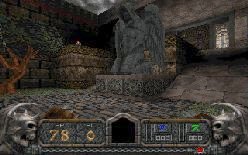
January 2, 1999: News from VR Standard Corp.:
'VR Standard's 3D Glasses, "VR Joy" is the exclusive eyeware bundled with "Hexen II full retail version".
The bundled VR Joy retail package will be sold to the channel partners worldwide from Jan.4.1999. The retail price will be kept the same as current price,US$99.99.'
January 1, 1999: HAPPY NEW YEAR
Earlier News: News of 2nd Half of 1998
News of First Half of 1998
News of 1997
